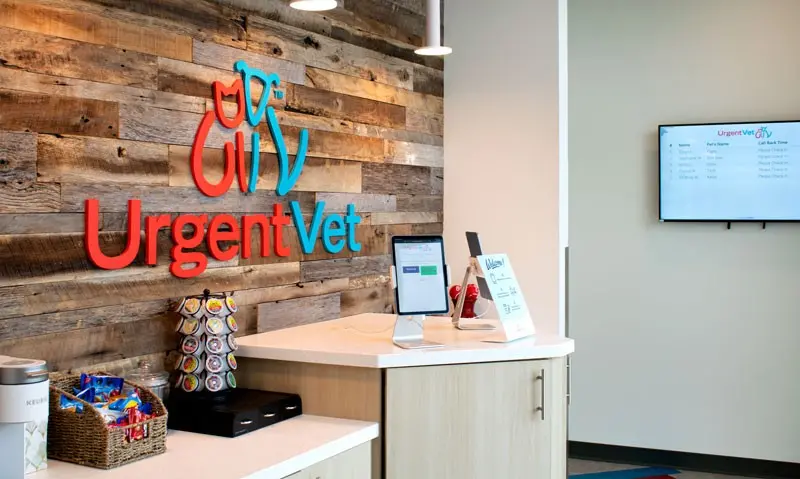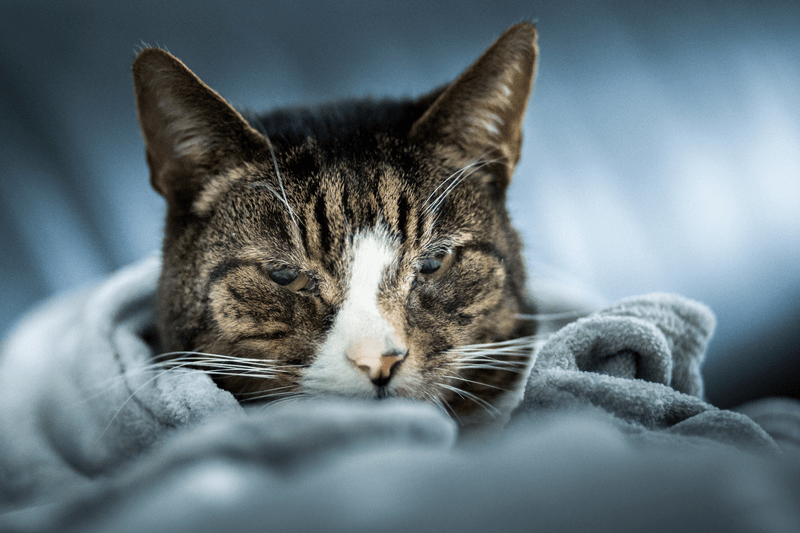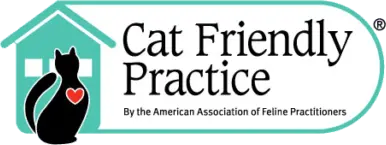Like people, pets are vulnerable to numerous highly contagious upper respiratory infections that show signs and cause significant discomfort. Understanding this condition and learning to recognize worsening signs can help you determine whether you can safely monitor your pet at home or you should seek veterinary care.
What is an upper respiratory infection in pets?
Your pet’s respiratory tract is divided into upper and lower respiratory sections. The upper respiratory tract includes the nasal passages, sinuses, pharynx (i.e., the throat), vocal cords, and the trachea (i.e., windpipe), while the lower respiratory tract includes the lungs.
Upper respiratory tract infections (URIs) occur when pets are exposed to contagious pathogens through close contact with aerosolized droplets or liquid secretions (e.g., eye or nasal discharge). Although these infections are initially localized to the upper respiratory tract, severe infections can spread to the lungs (e.g., pneumonia) and other systems.
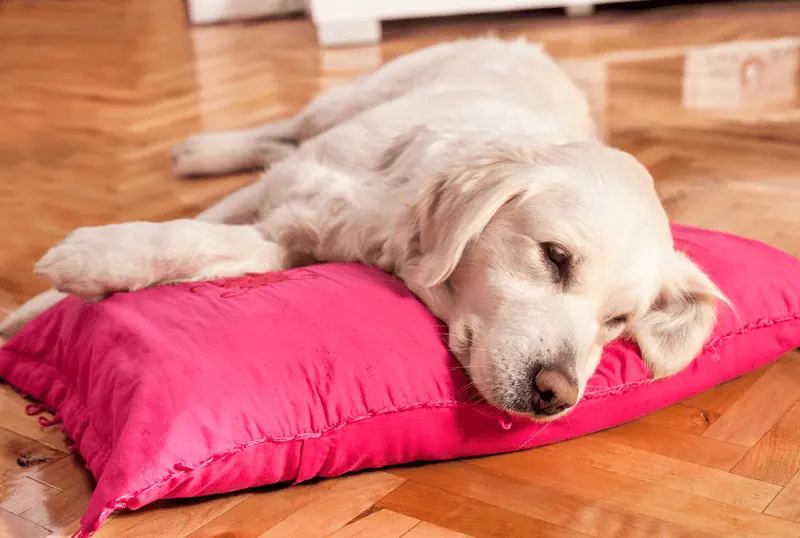
What causes upper respiratory infection in pets?
Many pathogens are responsible for URI in dogs and cats. The most common include:
- Viruses — These include parainfluenza, adenovirus type 1, and various influenza strains in dogs and feline herpesvirus (i.e., feline viral rhinotracheitis) and calicivirus in cats.
- Bacteria — Bordetella bronchiseptica is one of the bacteria responsible for kennel cough in dogs and can also infect cats. Other bacterial causes include Streptococcus spp, Mycoplasma spp., and Chlamydophila.
- Fungi — Fungal infections can occur in outdoor cats who inhale Cryptococcus spp. spores in the environment.

How are upper respiratory infections transmitted in pets?
Viral and bacterial pathogens are transmitted through direct pet-to-pet contact, aerosolized droplets (e.g., sneezing, coughing), or contact with infected surfaces such as shared dishes, toys, or caretaker clothing. Transmission is most common in facilities that house or care for large numbers of unfamiliar pets, such as:
- Animal shelters and rescues
- Boarding and grooming facilities
- Pet supply stores
- Dog parks
- Veterinary hospitals
My pet is vaccinated—can they still be infected?
Although vaccines can help curb URI transmission, they cannot reduce or eliminate the source (e.g., viruses, bacteria, fungal spores) or cure exposed pets, or those who are virus carriers. As such, a vaccinated pet can still suffer from a URI, although fortunately, vaccinated pets typically experience less severe signs and recover more quickly than non-vaccinated pets.
Recognizing Signs of Upper Respiratory Infection in Dogs and Cats
Signs of upper respiratory infections in dogs and cats can range from mild to severe. Some are self-limiting, while others require veterinary care to prevent progression to the lungs or other body systems. Depending on the infection type, signs may include:
- Clear or colored discharge from the nose or eyes
- Sneezing
- Goose-honk or hacking cough in dogs
- Conjunctivitis (i.e., inflamed and swollen eyelids, often with eye discharge)
- Appetite loss
- Lethargy
- Fever
- Mouth or nose sores
- Noisy breathing
- Difficulty breathing
If an upper respiratory infection progresses to the lungs, signs will include respiratory changes, including increased respiratory rate and labored breathing (e.g., gasping, wheezing, open mouth breathing). Dogs with lower respiratory infections may experience a wet or productive cough.

How can I tell if my pet needs urgent care?
Mild upper respiratory infections in dogs are generally self-limiting and do not require immediate veterinary attention. If your dog is generally healthy (i.e., no pre-existing problems), displaying only mild signs, and otherwise behaving normally (e.g., eating and drinking), you should isolate them from other household pets, periodically use a warm, wet washcloth to gently remove any discharge and clear the nasal passages, and watch them closely for worsening signs. Any signs of lethargy (sleepiness), not eating, fever, or increased coughing should be evaluated by your veterinarian immediately.
Cats with upper respiratory illnesses tend to suffer more painful conditions, including mouth ulcers, cat conjunctivitis, and nasal discharge, which affects their ability to eat. Signs can persist for 14 to 21 days, so we recommend scheduling an appointment with your regular veterinarian or at one of our locations. Unlike dogs and humans, cats only breathe through their nose. Severe congestion can lead to respiratory distress, which is an emergency. Cats also don’t like to eat when they can’t smell, which can lead to futher complications.
Your pet’s illness may seem mild, but URI can progress quickly—especially among puppies and kittens, senior pets, and those with other health conditions. Contact your pet’s primary veterinarian or UrgentVet if their condition is affecting their ability to breathe, rest, or eat normally. Left untreated, severe URIs can be life-threatening.
If your pet is in respiratory distress (i.e., panting at rest, gasping, open mouth breathing, blue or purple gums), you must take them to the nearest emergency veterinary hospital for life-saving treatment.
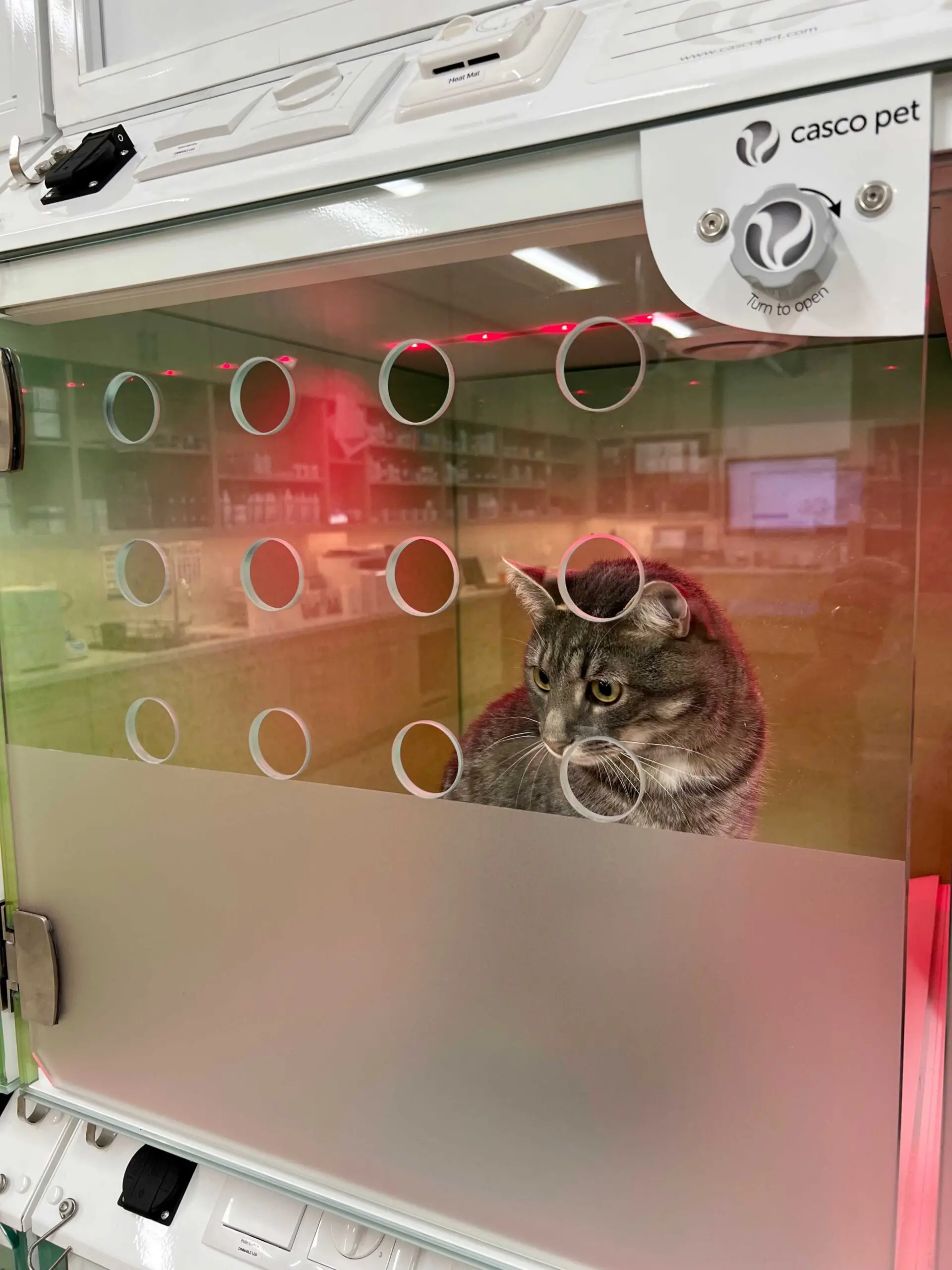
Should I quarantine my pet?
Symptomatic pets should be isolated from other pets to prevent spreading infection, and owners should practice strict hygiene (e.g., hand washing, changing clothes after caring for the sick pet) to prevent virus or bacteria transmission.
Why does my cat suffer from chronic upper respiratory infections?
Cats infected with feline herpesvirus and calicivirus become carriers after recovery, and many will continue to shed the virus after treatment. Most carrier cats experience dormant or latent infection (i.e., infection that stays in the body in an inactive state) unless increased stress triggers a relapse or flare. During a flare, cats resume shedding the virus and their clinical signs will return.
At UrgentVet, our mission is to ensure your sick or injured pet has access to expert after-hours veterinarian care with a compassionate touch, and that you know where to go for prompt treatment and peace of mind. If your pet is sneezing, coughing, feverish, or simply not right, our teams can help. Contact an UrgentVet location near you, or check-in online to save your spot—because your pet can’t wait to feel better.
